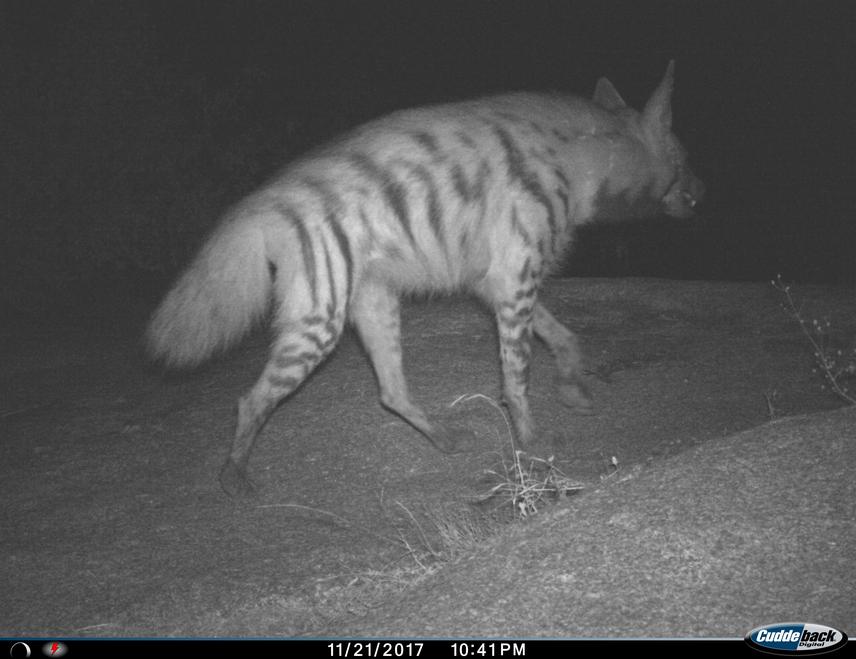Iravatee Majgaonkar
Other projects
6 Feb 2015
A Study of Wolf Distribution and their Interactions with Shepherds in an Agro Pastoral Landscape in Western Maharashtra
30 May 2022
Understanding Pastoralist Dependence on Biodiverse Savanna Ecosystems: Exploring a Land Sharing Framework for Conservation
Our aim is to (i) assess carnivore use of a dry scrub habitat in Koppal district of North Karnataka through standard population monitoring techniques (ii) Monitor their interactions with humans in the surrounding regions through informant
networks.

A Striped Hyena captured in our camera trap in one of our large carnivore surveys.
The dry scrub habitats of the Deccan peninsula in India are rarely recognized as ecologically unique, primarily due to high human-use. But in reality, there is a high diversity of large and small carnivores in these landscapes which share space with humans and very little is known about how they persist here. We want to understand where major large carnivores like leopards, bears, wolves and hyenas are present within the Koppal district of north Karnataka and collect information on their interactions with humans especially in terms of attacks on livestock and humans. This will be done through interviews with key local informants and with shepherds who are likely to lose livestock to carnivores. We will note down locations of carnivore presence in the last one year and use this to map their distributions. For livestock loss, both from the recent past and real-time, information about circumstances of loss and geographic locations would be noted. Such information will help us understand areas which support carnivores and are also prone to livestock losses.
In addition to the above, our objective is also to use camera traps to monitor biodiversity in fragmented yet specialized rocky habitats which dot the Koppal landscape and are known to host a high diversity of large carnivores. We expect our study to highlight the significance of these habitats for large carnivores since they are otherwise considered as degraded scrub lands and are vulnerable to large scale modifications viz., quarrying. We want to advocate for viewing arid human landscapes as areas of high conservation importance and suggest approaches for successful sharing of space between humans and large carnivores in these areas.
Our findings will be shared with local stakeholders like the collaborating NGO, the Forest department, the scientific community and most importantly, with local people who share space with wildlife. We hope that our research can eventually take the form of assisting local people to reduce losses to carnivores and supporting them to share space with them.